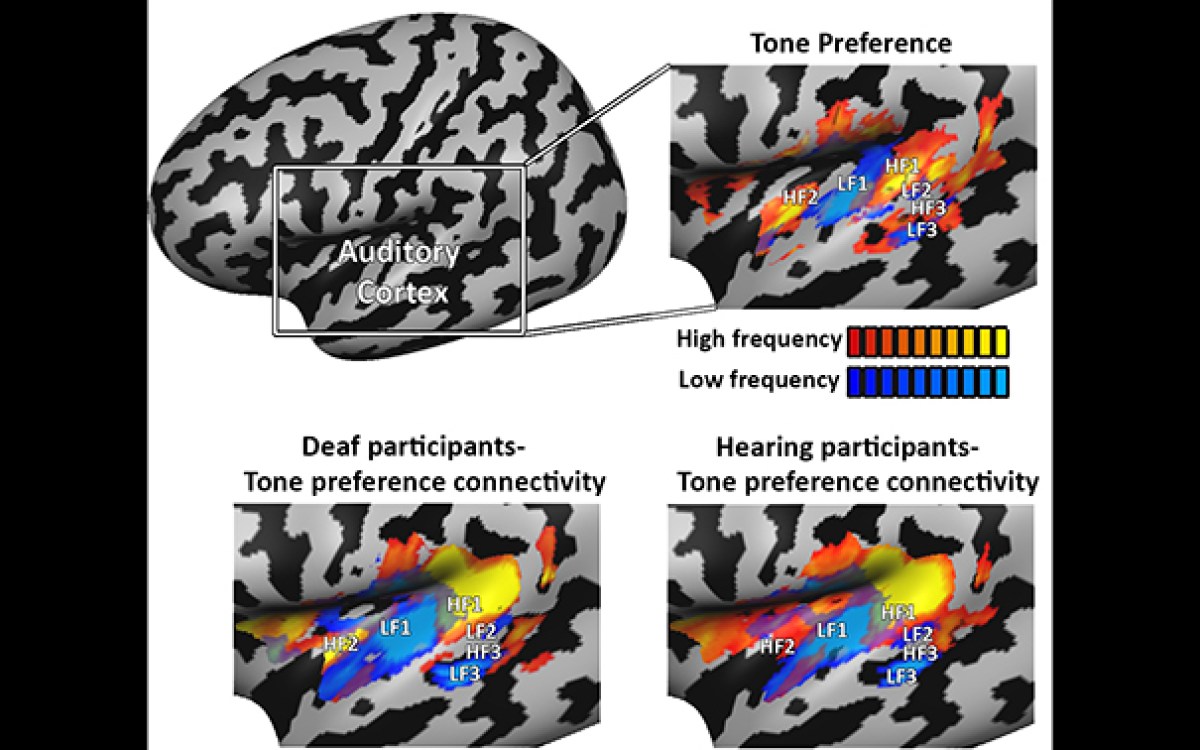How the brain handles tools
Those born with and without hands represent tools the same way in the brain, study finds
Scientists have long known that the brain’s visual system shows considerable organization. Tests have repeatedly found that different parts of the brain are activated when people see different objects. Animals, body parts, tools, and large things such as houses, for example, are represented in different parts of the brain.
What they haven’t known is how that specificity developed. Does the brain just know, innately, how to represent various domains of objects, or does experience play a critical role?
The answer, Harvard scientists say, is that it’s largely innate. In recent years, research has shown that in people born blind, the visual system’s specificities are like those found in sighted individuals. This demonstrates that visual experience is not needed for the emergence of this organization. Because blind people do have experience in touching and using objects and tools, it raises the question of whether other sensory or motor experiences could be responsible for the specialization of the visual cortex in processing manipulable objects (e.g., a toothbrush, a comb, or a teapot) and actions.
This possibility rests in an area of visual cortex that specializes in processing tools and hands, although their visual appearances are distinct. This region is well connected to a brain network engaged in the motor aspects of tool use, suggesting that its origins lie in the usefulness of processing both tools and hands because together they produce actions. But is this organization dependent on experience using hand tools, or is the brain specialization the product of experience over evolutionary time?
In a recently published study in the Proceedings of the National Academy of Sciences, Ella Striem-Amit, Gilles Vannuscorps, and Alfonso Caramazza show that the brains of people born without hands (upper limb dysplasia) represent tools and hands much as do the brains of people born with hands. Thus the finding suggests that the connection between hands and tools is deeply ingrained in brain organization.
To explore brain organization in people born without hands, the researchers — who had previously studied people born without hands and found that their perception of hand actions was as fast and accurate as the perceptions of people born with hands — turned to functional magnetic resonance imaging, or fMRI. The team recruited volunteers and tracked their brain activity as they were shown images of hands and feet, as well as images of tools and large, non-manipulable objects like tables and refrigerators.
“What we were looking for were areas of conjoined selectivity,” Striem-Amit said. “Earlier studies had suggested that an area in the visual cortex shows selectivity both for viewing hands and tools. If that same overlap were present in those born without hands, it would support the idea that it is a foundational part of the brain’s organization.”
“Of the five participants born without hands, four showed the signature hand-tool overlap, suggesting that the hand-tool overlap in the brain may be innate,” Vannuscorps said.
Ultimately, the study suggests that for some foundational types of brain organization, experience is simply unnecessary. “The study of brain organization in individuals deprived of particular sensory or motor experience, such as the congenitally blind or individuals with upper-limb dysplasia, provides a crucial testing ground for the role of such experience in the functional organization of the human brain,” Caramazza said, “and it seems that its role is rather minor by comparison to the evolutionarily determined organization.”
This research was supported with funding from Società Scienze Mente Cervello–Fondazione Cassa di Risparmio di Trento e Rovereto, the Provincia Autonoma di Trento, by a Harvard Provostial postdoctoral fund, the European Union’s Horizon 2020 Research and Innovation Programme, and the Israel National Postdoctoral Award Program for Advancing Women in Science.






